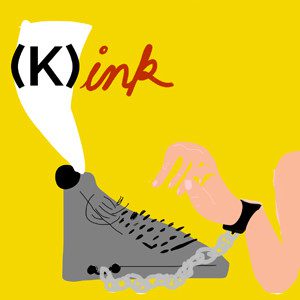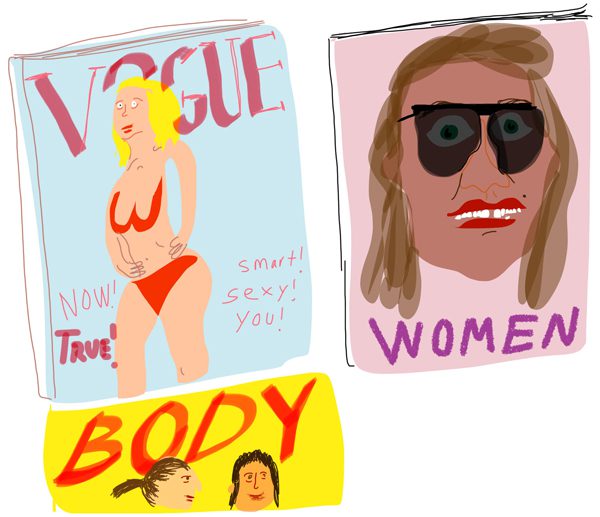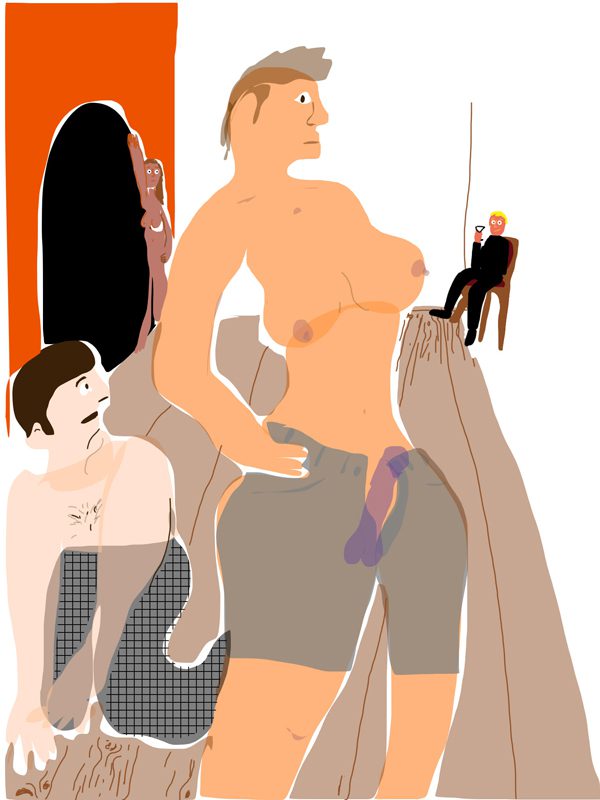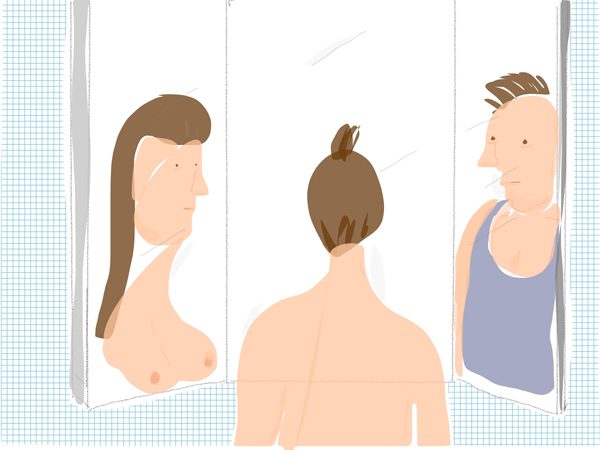
There’s evidence that D.H. Lawrence enjoyed an erotic power exchange relationship with his wife, that James Joyce was into scat (among other things), and that Oscar Wilde—well, most of us know what Oscar Wilde liked. These literary geniuses explored radical sexual agency and desire in their work and in their relationships, but little beyond rumors and personal letters exist to tell us what they themselves thought of their turn-ons and the ways in which those dovetailed with their writing. Even if space for such a discourse and community had existed back then, Lawrence, Joyce and Wilde couldn’t freely discuss their sexuality. As it was, they faced censorship and generated scandal wherever they went, and of course Wilde went to prison for his sexual behavior.
Although our world is still intolerant of sexual difference, I want to believe we’re at a point where people can speak openly about the consensual ways we express our erotic selves. And I’m interested in the connections between those private expressions and the larger, more public work we do in the world. This series is meant as a forging of community; a validation of that which gets called sexual deviance; and a proud celebration of the complex, fascinating ways that humans experience desire.
In this ongoing series of short personal essays, writers in all genres—novelists, poets, journalists, and more—explore the intersection between our literary lives and practices and our BDSM and fetishistic lives and practices. In other words, these essays aren’t about writing about non-normative sex: rather, it’s a series about how looking at the world through the lens of an alternative sexual orientation influences the modes and strategies with which one approaches one’s creative work.
If you have questions or comments, or if you’re a writer who would like to contribute, please contact me at kinkwriting@gmail.com.
–Arielle Greenberg, Series Editor
***
On the Beauty of Imperfect Attempts
A few years ago, I wrote an essay for a blog called MsBehaved about identifying as a femmy tomboy—a derivative of the more frequently used term tomboy femme. I labored over the intricacies of how I related to my gender, how differently I felt with male and female friends or lovers. Certain actions, like who held the door open or positions I assumed in bed changed my perspective on my role as a woman—even changed whether or not I felt like a woman.
In my essay, I was searching for an algorithm. I wanted to streamline my relationship with my gender until it was easily written down. I believed this might help others understand their own genders. I believed simple answers to be part of the nature of blogs. Since posts tend to be short, by necessity they must cater to easily digestible arguments.
But every formula I came up with seemed to mute any exception. For instance, I feel more feminine around cis-men than cis-women unless we’re lifting weights together, or I’m pinning his arms above his head, or if the cis-woman happens to be more butch than I am.
For a post just shy of a thousand words, I’m happy with how it turned out, but it’s only in retrospect that I understand what I was attempting to do went far beyond what a femmy tomboy is and what a blog post involves. I wanted to uncover the nest of wires comprising my gender identity and describe its complicated mass. This task would’ve been a better fit for a literary essay, a genre I wasn’t very familiar with at the time.
It wasn’t until grad school, which I started two years after that MsBehaved post, that I became intimately acquainted with literary essays. Before that, the nonfiction I gravitated to included books about religious, feminist, and gender studies; memoirs; and mainstream and alternative lifestyle magazines and blogs. As diverse as this range of reading was, all had the same habit of attempting to organize truth like one would organize a closet, giving everything a home and often a label. Unlike objects in a closet, in these types of nonfiction, misfit truths—unanswered questions, truths too complicated to present in a tidy fashion—can get discarded or ignored.
I grew up reading Christian theology, drawn over time to increasingly more progressive outlooks that helped me hold onto my faith. Theology is a big, big closet. Within it are attempts to make sense of God, and centuries of varying traditions and perspectives. But most theological frameworks focus on what is knowable. They use bullet points and make up fancy phrases like “irresistible grace” and “historical Jesus.” And even though readers of Christian theology know that we can only “see through a glass, darkly” what is real and true, these frameworks give us something tangible with which to organize our faith.
 I’ve also been influenced by personal pieces in magazines like Vogue and Marie Claire. If theology is a big closet, so is the world of emotional life and relationships, clumped together in these mags as “women’s issues”: our bodies, how to date, how to feel successful, our relationships with our mothers. As much damage as Vogue has done to my body image—for decades now reminding me there are new ways to diet, and that beautiful clothing won’t fit my hips—it has also provided me a glimpse into the minds of other women. Writers for magazines like Vogue tend to label some piece of truth on the shelf, like the personal essay I found in my early twenties that encouraged taking a “lover for a season.” It helped me make peace with the fact that the man I was dating, my first serious boyfriend, still held a meaningful (if impermanent) place in my life even though I didn’t want to marry him.
I’ve also been influenced by personal pieces in magazines like Vogue and Marie Claire. If theology is a big closet, so is the world of emotional life and relationships, clumped together in these mags as “women’s issues”: our bodies, how to date, how to feel successful, our relationships with our mothers. As much damage as Vogue has done to my body image—for decades now reminding me there are new ways to diet, and that beautiful clothing won’t fit my hips—it has also provided me a glimpse into the minds of other women. Writers for magazines like Vogue tend to label some piece of truth on the shelf, like the personal essay I found in my early twenties that encouraged taking a “lover for a season.” It helped me make peace with the fact that the man I was dating, my first serious boyfriend, still held a meaningful (if impermanent) place in my life even though I didn’t want to marry him.
Later I started a blog about fitness and emotional eating and joined related blogging communities, but quickly became disenchanted with their uncritical obsession with weight loss. Missing was the friction between being body positive and health-focused. On my own blog, I started seriously investigating my attitudes about my self-worth, my complicated dating life, and my fluctuating body image. As I dug deeper into the blogosphere, I discovered more radically queer and feminist sites (eventually stumbling across MsBehaved), sites that offered alternatives to what I’d grown up with: mainstream advice straight from the grocery store magazine rack.
From three-hundred page ideologies to simple “rules” delivered in pithy 1200 words articles, the prose I’d immersed myself in centered on what the author knew to be true. I believed that my voice would only matter if I had solutions to add to the mix, and I became serious about writing—serious enough to apply to MFA programs—because I felt like I did. I wanted to share my path to self-acceptance as a queer progressive Christian who came to terms with being kinky and polyamorous, learned to embrace a spiritual side of sex, and got rid of a great deal of sexual shame along the way. It made sense to me to write my truths, because I thought they would be helpful to others. I still believe this, but I also believe it’s deceptive, not in line with the true spirit of art. I now believe that my writing is simply not authentic if I provide only answers, and I’ve come to see authenticity as one of my key values. I believe my words can be meaningful, and possibly helpful, when they only manage to articulate even more questions.
I’m currently halfway through my second year in a creative nonfiction graduate program, and it’s here that I was introduced to literary essays. Each semester I read half a dozen essay collections and have realized that the genre often does something different than the other nonfiction I was acquainted with: the literary essay is allowed to focus just as much on what the author doesn’t know as what she does.
As all creative nonfiction grad students are taught, when Michel de Montaigne christened his pieces “essays,” from the French essayer, which translates to “attempts,” he was leaving room for failure. Not really failure even—more like imperfection. He could write about the same thing over and over again, and contradict himself, and expose what he didn’t know, and it would all be worth reading. Essays are attempts at capturing beauty and truth, but the essay isn’t the result of the attempt, but the attempt itself.
Much of my work nowadays tends toward the spiritual: my relationship with the Christian God, a meditation practice and growing interest in Buddhist ideologies, and the tarot readings and other pagan rituals my friends have introduced me to all have cautious places in my spiritual cocktail. In one essay, I ask what I should do with a jealous God. It’s as unanswered in my spiritual life as it is on the page, but I believe that writing about how I make my God jealous, without being able to answer what to do about it, is enough for a finished piece. It’s a cliffhanger: will God reject me? Do we break up over my wanderings?
I’ve become kinkier and more devoted to non-monogamy in both my spiritual life and my romantic pursuits as I explore them both in real life and on the page. But I’m wary of attempting to put together another algorithm for the exact relationship between what I write and how I live. That’s a trap. It’s mysterious and deep, and I’d like to be content with exploring it without resolving it.
I know when I don’t understand something, my immediate impulse is to journal about it until I do. I tend to approach the page with the confidence that if I write and ponder long enough, I’ll hit upon something solid. I love this about writing. But the essay has allowed me to believe that what I haven’t figured out might be just as interesting to other people as what I have. Charles D’Ambrosio calls essays a “forum for self-doubt.” I no longer confine my questions to the private pages of my journal: they have a new forum in creative essays that I wish to share.
 The dungeon is my other forum, the other place where it feels safe for me to expose and explore my self-doubt. Around the same time as the Msbehaved post, I attended a big kink event where I wore a man’s undershirt and boyshorts. It marked the first time at such an event that I’d ventured away from the uber-feminine—lacy bras and panties and fitted dresses. I tend to be more confident with the femme me than the butch me, more sure that the femme is desirable. My lover Jake tried something new as well. Wearing only a pair of my black hose, he dipped tinted toes into feminine water. We were both playing with more than just costumes; we were playing with our genders.
The dungeon is my other forum, the other place where it feels safe for me to expose and explore my self-doubt. Around the same time as the Msbehaved post, I attended a big kink event where I wore a man’s undershirt and boyshorts. It marked the first time at such an event that I’d ventured away from the uber-feminine—lacy bras and panties and fitted dresses. I tend to be more confident with the femme me than the butch me, more sure that the femme is desirable. My lover Jake tried something new as well. Wearing only a pair of my black hose, he dipped tinted toes into feminine water. We were both playing with more than just costumes; we were playing with our genders.
I went even further, placing a small purple dildo inside my panties, painstakingly situating the bulge to be subtle but noticeable. It was a starter cock I purchased with my lover to introduce the two of us to the wonderful world of pegging. Its nonrealistic smooth shape and color helped me feel like I was challenging my womanhood in a more casual way; had it looked like the real thing, maybe I would have had to treat it as such. I think I was uncomfortable with the idea of others (or maybe myself) assuming I wanted a real penis—that I was in the wrong body. I like my cis-body and feel positively about its womanliness. But when I use a dildo, it physically extends something I tend to feel on an emotional level—that I’m more than a woman.
In kinky spaces like that event, I feel like I can try things out. I can experiment with looking or acting more masculine, then retreat back into my comfort zone. I can put my cock away.
Kink simultaneously feels like practice and the real thing. During a scene, I’m truly pursuing intimacy. When a partner chokes me, I’m risking something real in both my body and my heart. But I’m also practicing various skills and strategies and roles: consent, technique, receiving and dissecting pain. It’s an environment of play, but serious play. Religious scholar James Carse has this to say about play:
To be playful is not to be trivial or frivolous, or to act as though nothing of consequence will happen. On the contrary, when we are playful with each other we relate as free persons, and the relationship is open to surprise; everything that happens is of consequence . . . To be playful is to allow for possibility whatever the cost to oneself.
At the hotel event, while dressed in my tomboy attire, our friend K and I co-topped Jake. K tied him to a cross in different poses as I used floggers, a paddle, and my hands on Jake’s skin. I was aware of eyes on all three of us, and it made me hyper-conscious of our roles and our physical differences. In my mind, the men’s slim bodies accented both my muscular form (masculine) and my curves (feminine). I felt androgynous and womanly at the same time.
K remained clothed and worked quickly and silently, concentrating on his knots, stopping once in a while to press his knuckles into Jake’s back. I prowled around, creating a psychological space. Jake stood quiet and naked. Once in a while, he would break his silence and ask, “Is that all you’ve got?” I’d respond with harder blows. I took my shirt off, grateful for my breasts, grateful to be a woman who can pack a punch.
At the end of the scene, we placed Jake on his knees, his hands still tied behind him, and I took the dildo out of my panties and stuck it between his lips. I owned and used a masculine part of me in a new way: I genderfucked his mouth.
Not long after, I cut my hair short. I currently sport a masculine-looking mohawk, partially because I want to look as genderqueer as I feel. But here’s where I’m now comfortable telling you my exceptions and the things I still don’t know: at the conference, domming my lover, I felt as sexy as I ever had, because in the dungeon, the femmy tomboy blend feels accepted, even useful. But on dates with new men or at home looking in the mirror, I’m still insecure about the boyish face that stares back. Outside the dungeon or queer spaces, I’m still not confident that the tomboy is just as sexy as the femme, and I really wish I were. And every time I’m asked my gender, I wonder if it’s okay to claim both female and genderqueer.
 At my most vulnerable, I’m afraid: afraid of not being desirable, afraid of not being a good enough writer, afraid that there’s something wrong with my most authentic self. And airing my fears is an accomplishment that I am proud of in and of itself. I air them here on the page, and I play with them each time I’m naked or attempting something new in the dungeon.
At my most vulnerable, I’m afraid: afraid of not being desirable, afraid of not being a good enough writer, afraid that there’s something wrong with my most authentic self. And airing my fears is an accomplishment that I am proud of in and of itself. I air them here on the page, and I play with them each time I’m naked or attempting something new in the dungeon.
But if embracing imperfection is one of the shared political messages of both kink and literary essays, even as I agree with it, I also betray the cause. I hold myself to unrealistic standards. I shame myself for still having the same problems I had two or five or ten years ago: my lack of complete confidence in my body or my queerness. I think part of me hopes that participating in forums of self-doubt will some day erase the same imperfections I’m trying to embrace. This is contradictory, I know. I’m expecting something close to perfection of myself while still valuing imperfection.
All of this is why I’ll continue to need these forums and others: safe places to be imperfect. I wonder if Montaigne would agree that the attempts we seek are not attempts at perfection but attempts to embrace imperfection, attempts we should never hope to fully master. It’s here in the paradox that true beauty happens—at least for me.
***
Rumpus original logo and art by Liam Golden.




